Maintaining gear is important and so I've decided to learn how to sharpen knives. I bought a couple of sharpening kits and a cheap beater knife to practice on.
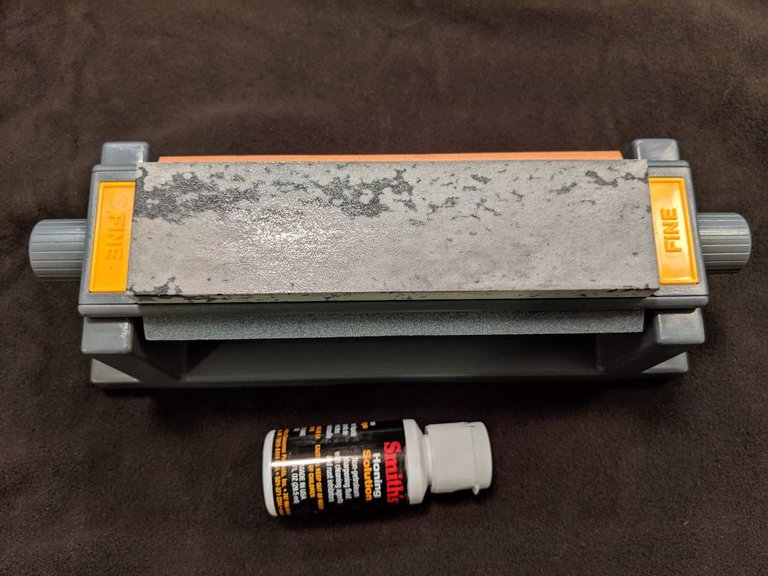
This is a Smith's brand sharpening set. There are three different stones from coarse, medium to fine. The bottom contains an oil to help the process. Basically the process starts on the coarsest stone then moves to progressively finer stones when an apex had been raised on the current stone. Well, that's the theory. In practise you'd likely only use the coarse stone to change the blade profile, fix a chip or a broken tip.
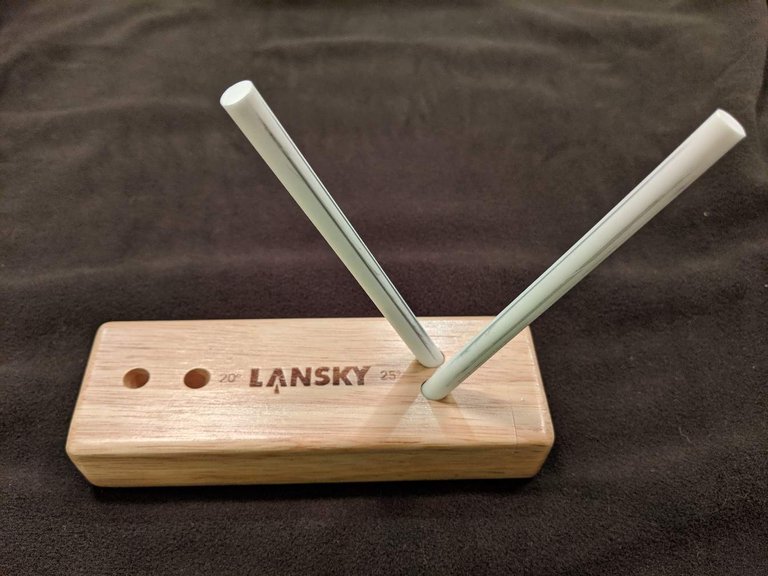
This set is for quick touch-up jobs to hone an edge. The kit includes medium grit rods too.
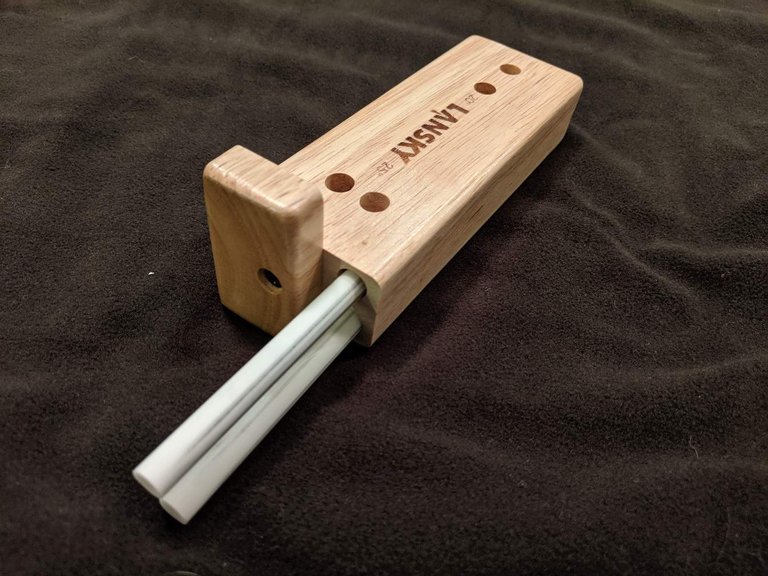
And, the rods store inside the base making this a great kit for the vehicle.
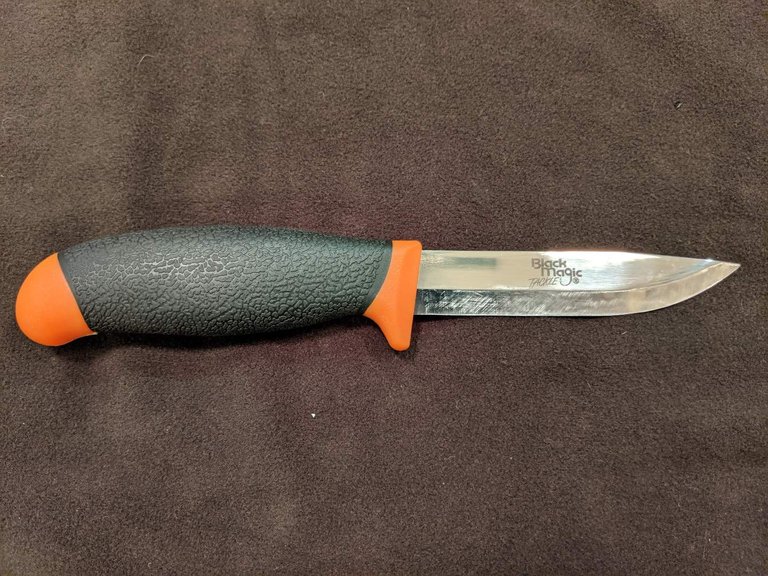
This is the cheapo beater knife. It's stainless steel with a true Scandi grind. That means the blade is straight at the top before coming to a V part-way down. Scandi is short for Scandinavia - which is the origin of this grind. Scandi grinds are meant to have quite good strength while still having enough of an edge for fine tasks.
Stainless steel isn't the easiest to sharpen, but a true Scandi, that is one without a secondary bevel, is pretty simple: angle the knife on the stone along the Scandi bevel and get grinding. The downside is Scandi can take some time to sharpen because you have to remove a lot of material. I'll learn on a true Scandi before I attempt secondary bevels and then eventually convex grinds.
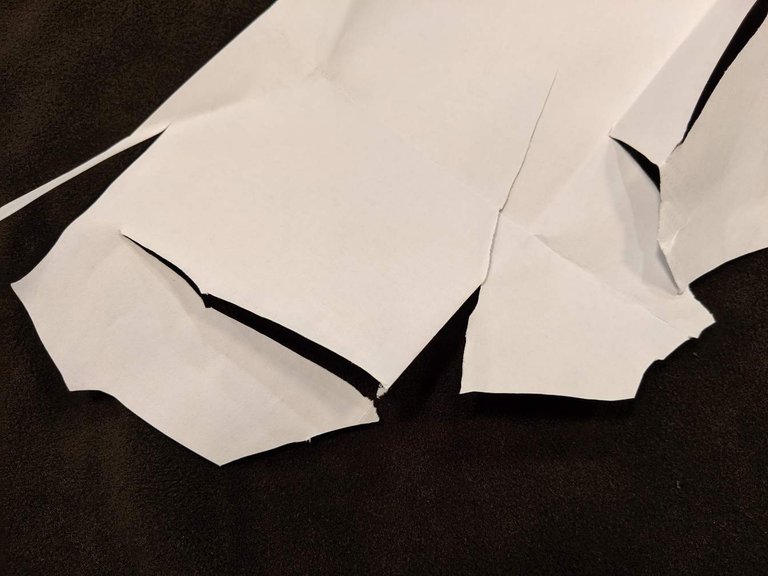
I think I did okay. Most of the factory machining marks are gone, the rolled tip fixed and the knife does a better job at cutting paper. We can tell where along the blade edge needs more attention if the knife tears at the paper instead of cutting it cleanly. Much better!
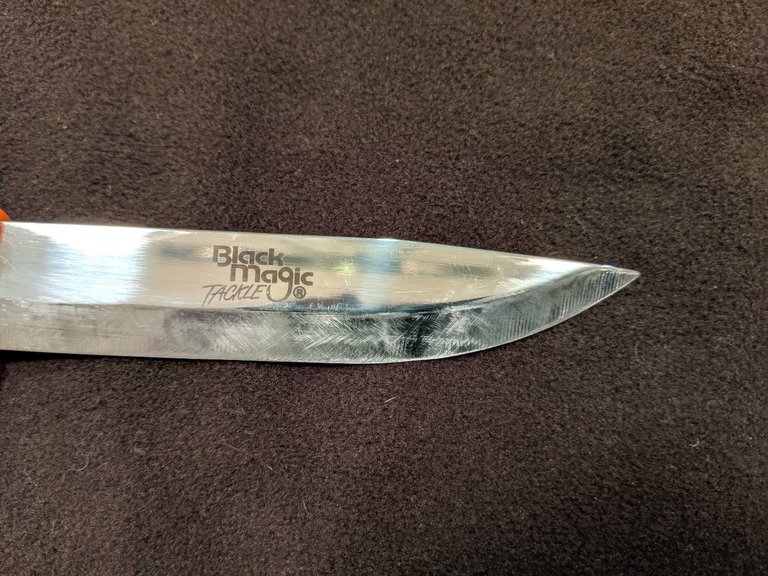
Not perfect, but progress I guess.
I'll blunt the beater knife on a brick and then go practise again. I'm told that sharpening is mostly about muscle memory and consistent angles, so I expect to take some time to learn.
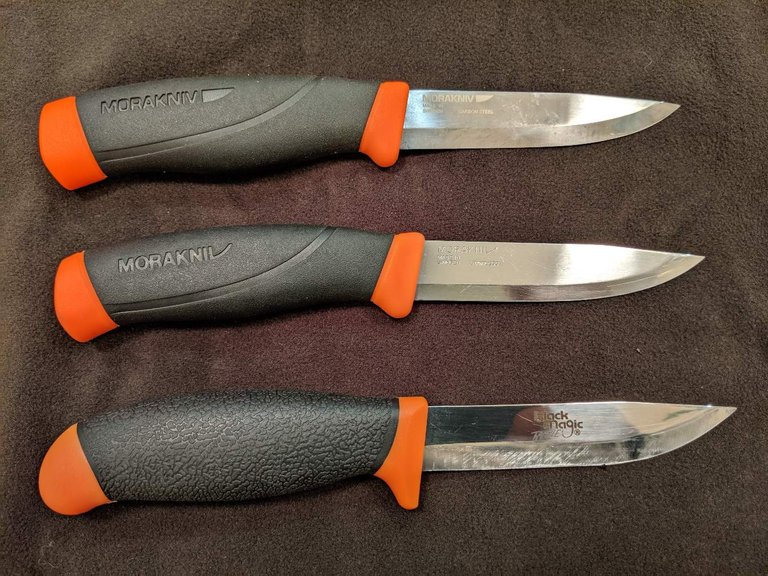
Now for a comparison of value knives. The beater knife looks similar to a very famous budget knife brand. But, to be fair, knives generally come in styles and companies will do their own version with most differences in the materials and manufacturing process and only small differences in the form
From top to bottom: Morakniv Companion Carbon Steel, Morakniv Companion Stainless steel and, the Beater knife in Stainless steel.
The most obvious differences are that the beater knife has the longest blade, the fattest handle and the biggest finger guard. Oh, and the cheapest price tag: beater knife is one third the price of the Moras. But, the blade comes out of the handle at a much flatter angle on the beater knife, so a larger finger guard is a good idea to stop the hand accidentally moving on the blade. This is less of a problem on the Moras because of the handle angle so they don't really need such a big finger guard. Also, beater is advertised as a bait knife so it's likely the user's hands would get wet and slippery - so again, the bigger finger guard makes sense.
The Mora stainless has the shallowest Scandi and both Mora companions are not true Scandies because they have a secondary V bevel near the edge.
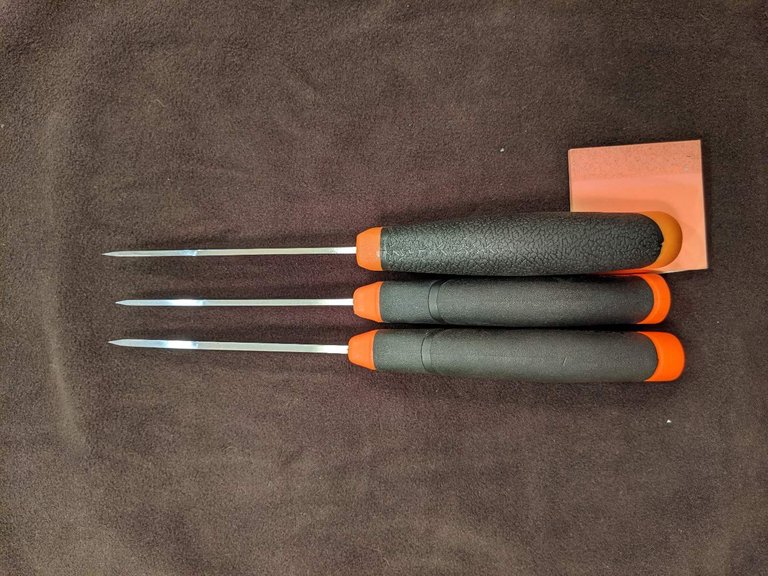
Bigger differences are viewable from the top. The beater has the thinnest blade with Mora stainless in the middle and the Mora Carbon having the thickest blade. The beater's handle is fatter around to give a good trip.
As a bait knife, a thinner blade in true Scandi with a decent depth shoulder gives a rust resistant design suitable for bait cutting when you don't want to use your fancy filleting knife. The handle should give decent grip in the wet. But, because of the blade profile and probable cheapness of the material - I wouldn't trust the knife for much more than light duty.
The Mora's are more of an outdoor knife. The thicker blade and secondary V bevel give a more robust edge for general camp tasks.
Anyway, I'll practise some more. I need a leather belt or strop next. The guy at the shop suggested I recycle old belts from the thrift store: a belt not suitable for wearing can have new life as a strop to get that shaving sharp edge.
Out.
Posted using Partiko Android
A lot of people can sometimes be purists about sharpening, but I think some of the new guided sharpeners get results that more or less remove the purist argument.
Learning to use a stone is always a good thing, and I have the same tri-stone thing from Smith's. I also have a little Lansky sharpener with the guides and stones on a rod.
If you want a real edge though, look for either a Wicked Edge or Edge Pro Apex sharpener. They speed up the process, and produce scary sharp results. Sure, some might call this cheating since it holds the angles for you, but the precision pays off in edge quality. They are pricey options, but you can literally take every knife in a collection to the top of it's ability.
I considered a guided option - the shop guy recommended it if we wanted results with little fuss. I went with stones to learn how to sharpen without the aids. Eventually I want to sharpen blades with convex grinds and I'm not sure the guided options do convex well.
I'm at a loss how I'd do hollow grinds, but I don't foresee ever owning a knife with a hollow grind so maybe I don't worry about that yet.
Posted using Partiko Android
Hollow ground blades have a secondary straight bevel for the actual cutting edge, the hollow is a primary grind that goes either part-way or all the way to the spine and is intended to help lower friction against things like food. It creates an air pocket preventing suction to the surface.
Convex is just done with some sort of slack-belt sharpener usually. It can either be the edge grind, or convex can have a secondary edge bevel as well.
Most of the guided sharpeners are best used for the small secondary bevel cutting edges anyways.
If you get good with the stones, consider upgrading to the larger Japanese style wet-stones.
Thanks for the advice!
Posted using Partiko Android
this was interesting. i'm not much one for knives, but i do remember the experience of taking kitchen knives to the knife guy in a city many years back to get them sharpened. small fortune. It's a great skill to have if you are a homesteader and can keep a kit and some good quality knives. Unfortunately, most people are still living in throw away culture mode, where they will just buy cheap knives and throw them out when they no longer cut as they should. The plus side is you can pick up really good quality knives for a few dollars at the thrift store if you know what you are looking for.
Oh yes! I'll have a look when I go to the thrift store for some belts.
Posted using Partiko Android
Thank you so much for participating in the Partiko Delegation Plan Round 1! We really appreciate your support! As part of the delegation benefits, we just gave you a 3.00% upvote! Together, let’s change the world!
Hi @eturnerx!
Your UA account score is currently 4.959 which ranks you at #1124 across all Steem accounts.
Your rank has improved 10 places in the last three days (old rank 1134).Your post was upvoted by @steem-ua, new Steem dApp, using UserAuthority for algorithmic post curation!
In our last Algorithmic Curation Round, consisting of 161 contributions, your post is ranked at #9.
Evaluation of your UA score:
Feel free to join our @steem-ua Discord server
Buenas tardes amigo @eturnerx deseo que se encuentre bien al igual que su familia. Buena publicacion amigo nuca había visto una máquina para amolar cuchillo yo los muelo con una piedra y agua . Que tenga una exelente tarde.